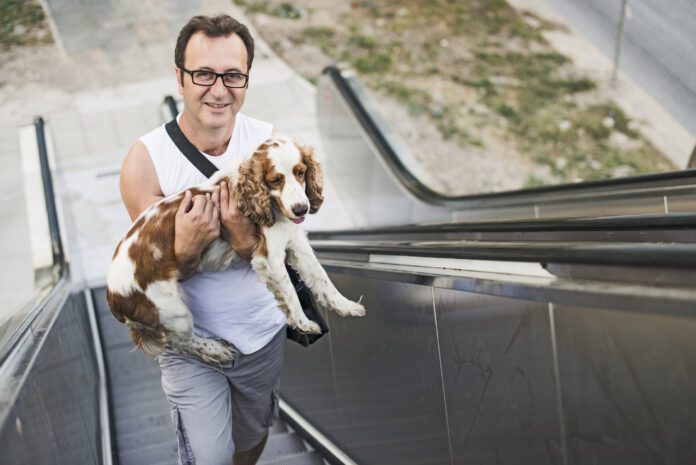No escalator is safe for your dog. With all the moving parts of an escalator, your dog’s paws, nails, tail, or coat can easily become entangled in the mechanism. If his leash becomes entwined in the escalator, your dog may choke to death before you can do anything about it. (Always have a safe, releasable collar on your dog with proper ID.)
Many airports and other buildings forbid dogs to be transported on escalators or moving walkways for good reason. Elevators are normally available—ask someone if you don’t know where they are—or take the stairs. Better yet, consider leaving your dog home.
If your dog is small enough, you could take him on an escalator if he’s in a safe travel crate. For tiny dogs, carrying your dog up an escalator is OK, but only if he’s small enough to comfortably hold and he doesn’t get scared and try to wiggle free. Plus, you still must be certain the leash can’t get caught.
If your dog is too large for you to safely carry on the escalator, use the stairs or elevator instead. Even guide-dog training schools avoid taking dogs on escalators.
If you’re determined to teach your dog to ride an escalator, you need a place where you can monopolize an escalator every day until he is trained. But bear in mind that this training is not something to attempt without a qualified fear-free/force-free dog trainer to help you. See this guide from Cornell University’s College of Veterinary Medicine for information if you absolutely must.





